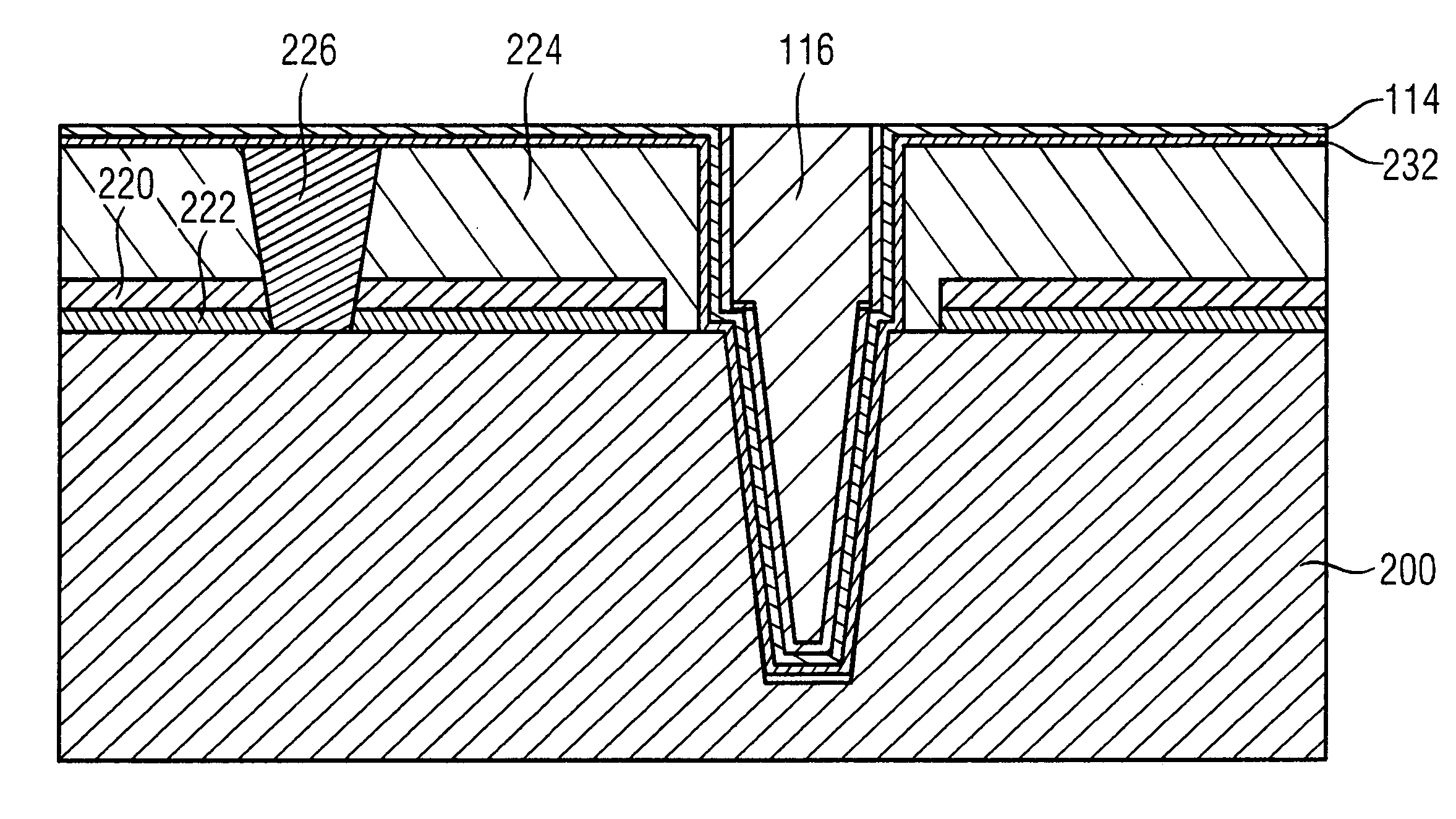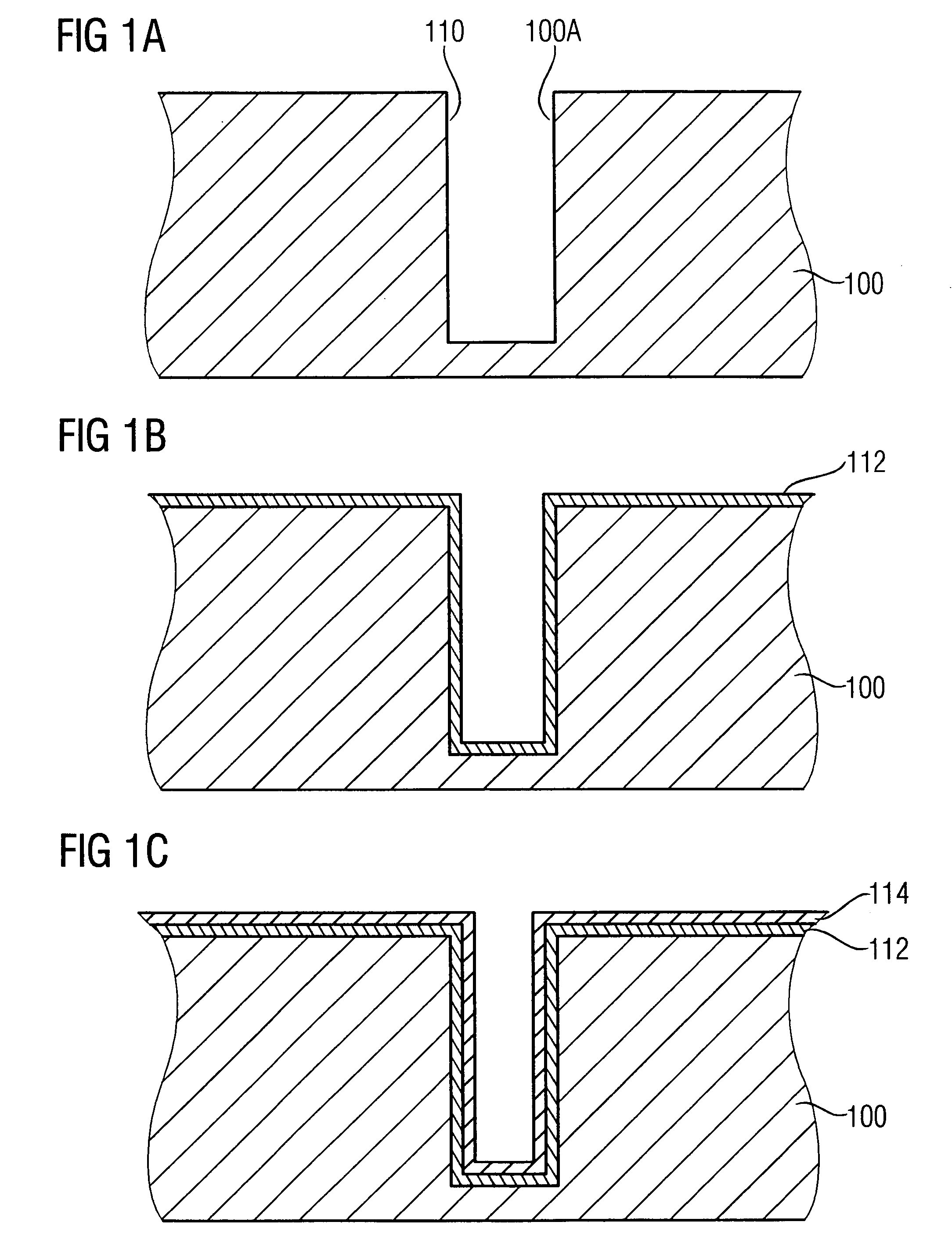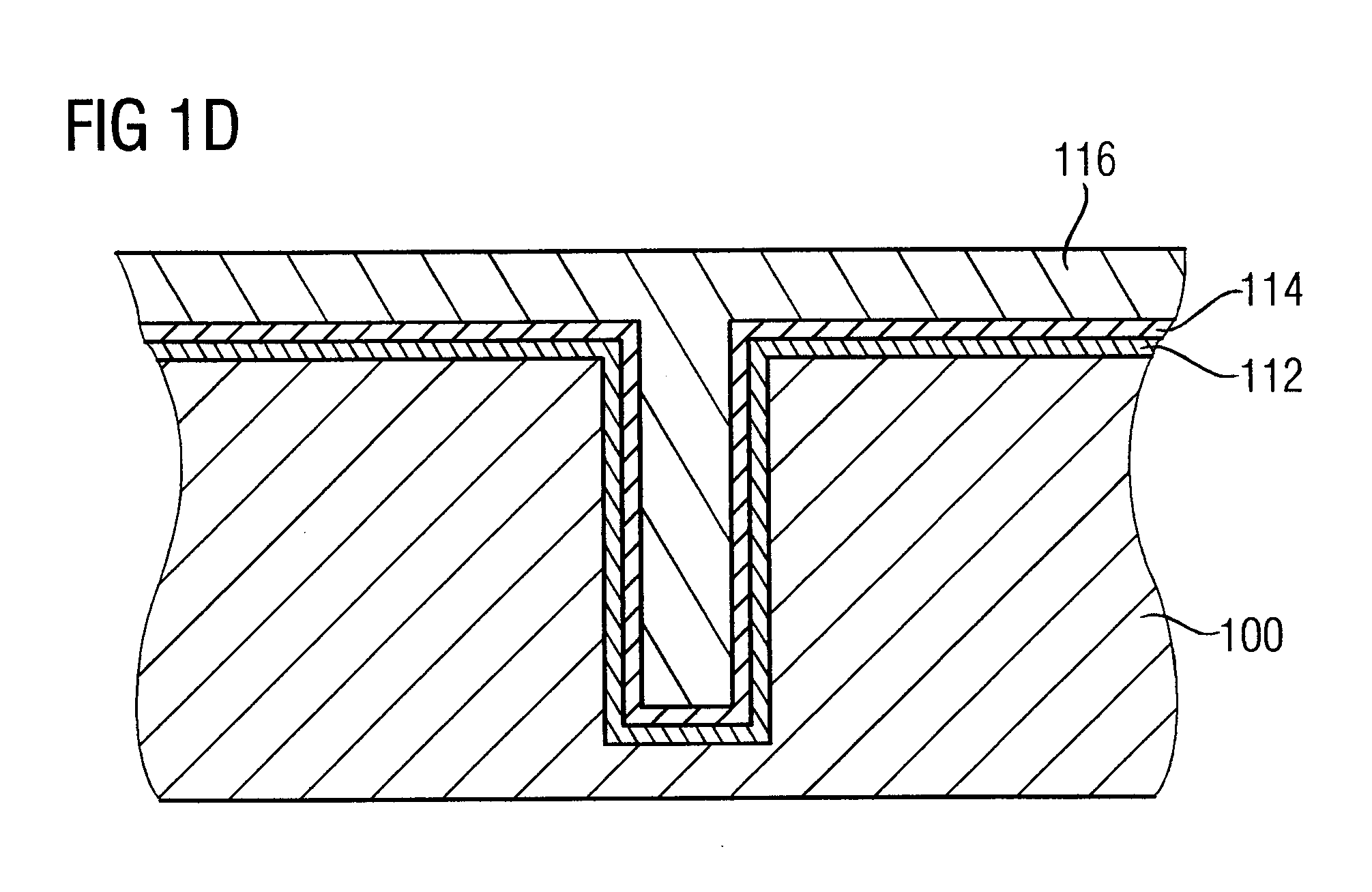Method for fabrication of a contact structure
a technology of contact structure and fabrication method, which is applied in the direction of semiconductor devices, semiconductor/solid-state device details, electrical apparatus, etc., can solve the problems of increasing electronic performance requirements, affecting the production efficiency of contact structures, and causing problems relating to electrical conta
- Summary
- Abstract
- Description
- Claims
- Application Information
AI Technical Summary
Benefits of technology
Problems solved by technology
Method used
Image
Examples
Embodiment Construction
[0030]A first fundamental embodiment of the present invention will be explained below with reference to FIG. 1a–d. In accordance with FIG. 1a, a structured surface 100a is formed in a substrate 100, which surface 100a may be, for example, a surface of a recess or opening 110 in the substrate 100, which opening is filled with an electrically conductive contact. Even though, in the preferred embodiments, a description is merely given of a production of contacts in via holes of a substrate, the present invention is not limited to such structures but may include, for example, the production of a conductive contact on a projection or on other structured surfaces. Substrate 100 may include any known substrate. Preferably, the present invention is particularly suited for producing contacts in a semiconductor substrate, and, as is particularly preferred, in a silicon semiconductor substrate. Substrate 100 may be integrally formed or may include a multi-layer structure with various layer mat...
PUM
| Property | Measurement | Unit |
|---|---|---|
| depth | aaaaa | aaaaa |
| frequency | aaaaa | aaaaa |
| inductance | aaaaa | aaaaa |
Abstract
Description
Claims
Application Information
 Login to View More
Login to View More - R&D
- Intellectual Property
- Life Sciences
- Materials
- Tech Scout
- Unparalleled Data Quality
- Higher Quality Content
- 60% Fewer Hallucinations
Browse by: Latest US Patents, China's latest patents, Technical Efficacy Thesaurus, Application Domain, Technology Topic, Popular Technical Reports.
© 2025 PatSnap. All rights reserved.Legal|Privacy policy|Modern Slavery Act Transparency Statement|Sitemap|About US| Contact US: help@patsnap.com



